




Step-by-Step Millimeters to Liters Conversion Explained
In ancient times, people used different tools for measuring capacities and volumes. So, there were no standard tools to be used by everyone; they used everyday objects such as jars and pots to measure volume and capacity. So, humans realised a unique system for measurement must be developed to be used worldwide.
Sometimes the amount of liquid inside different bottles is the same, but the capacities of the bottles are different. This amount is called volume. Volume represents the amount of liquid or how much space the liquid takes up in a container. In this article, we will find the relation between various liquid capacities like litres and millilitres and the conversion between these units.
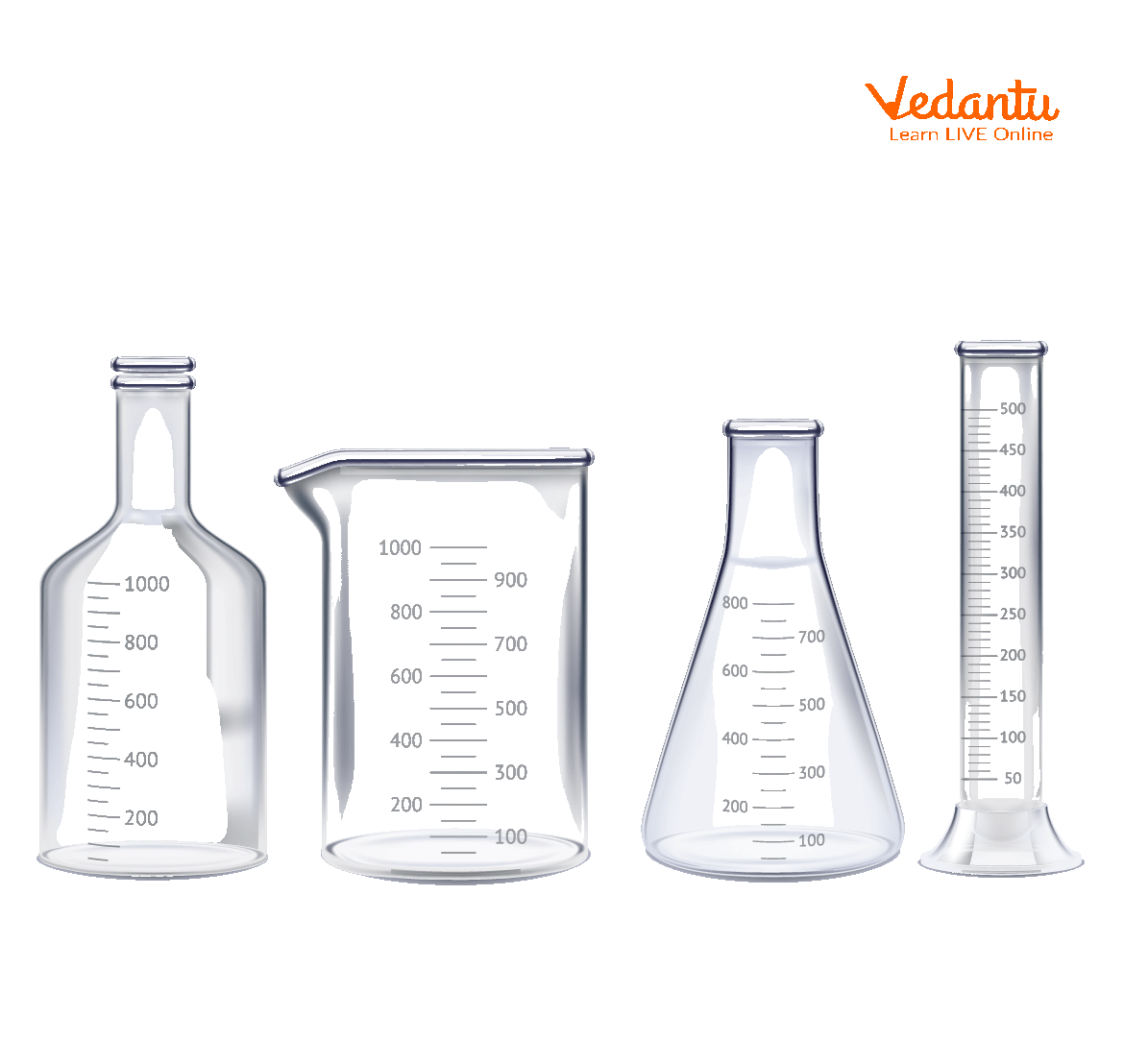
Glasswares
Litres to Milliliters Conversion
Litres and millilitres are metric units of capacity, that is volume used to measure the capacity of a liquid. The capacity of a liquid can be measured in millilitres, centilitres, litres, and kiloliters, according to their capacity to contain volume.
The interesting fact is that all these units represent the same quantity, but their values are different from each other. In this article, we will learn that 1L is equal to how many ml.
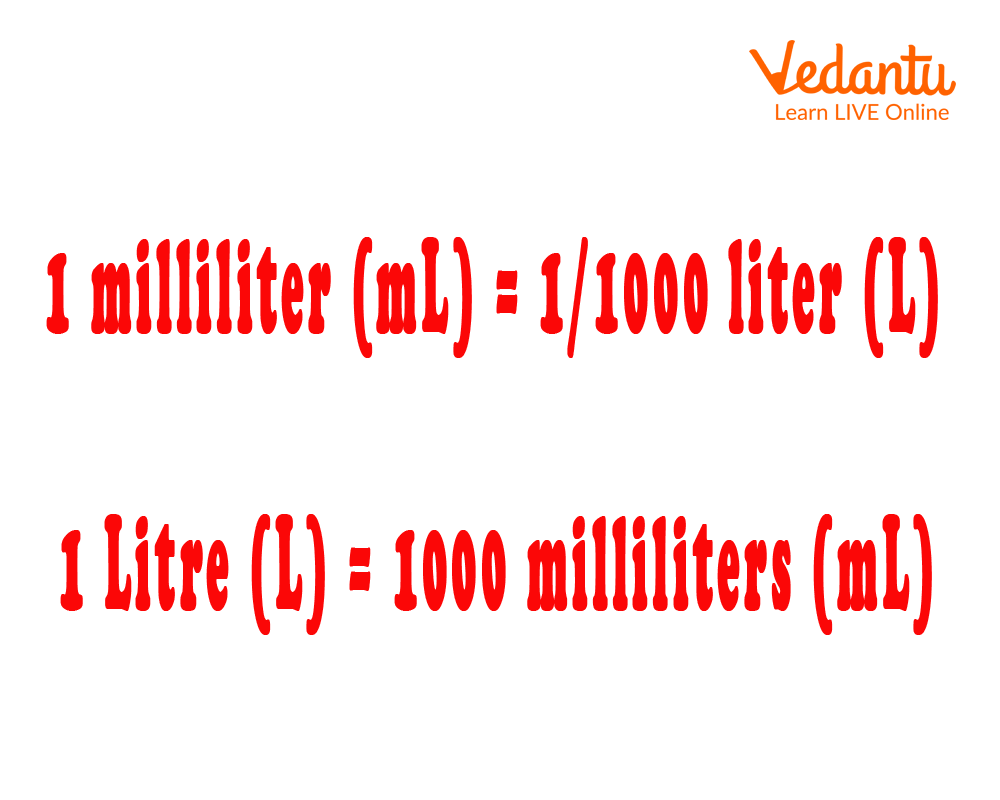
Litre to Millilitre Conversion
What Do You Mean By Litre?
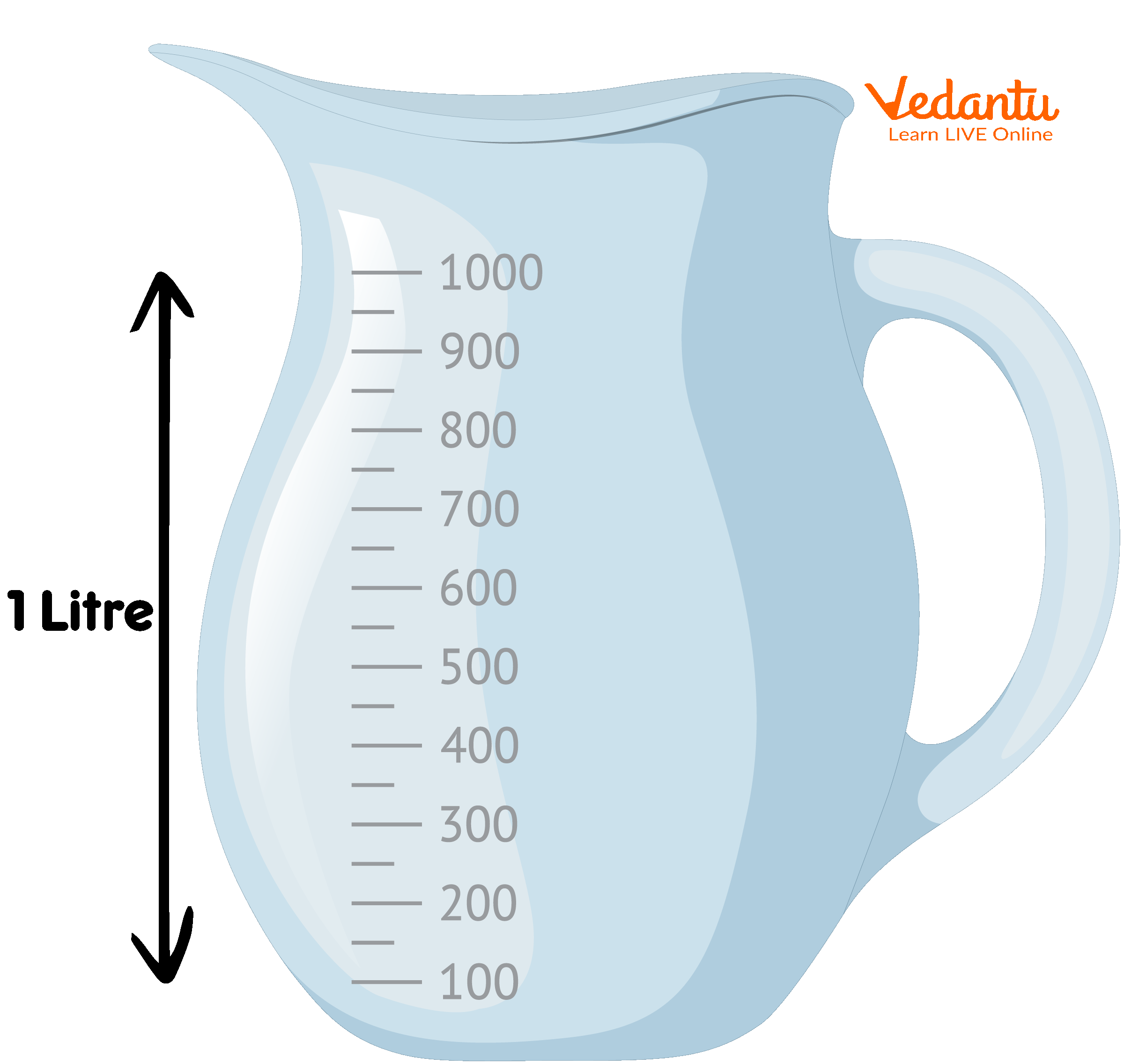
Litre Jar
A litre is a basic metric unit used to measure the capacity of liquids and gases, and it is equal to one cubic decimeter (1 litre = 1 dm³). The term litre is denoted by the letter 'l' or L.
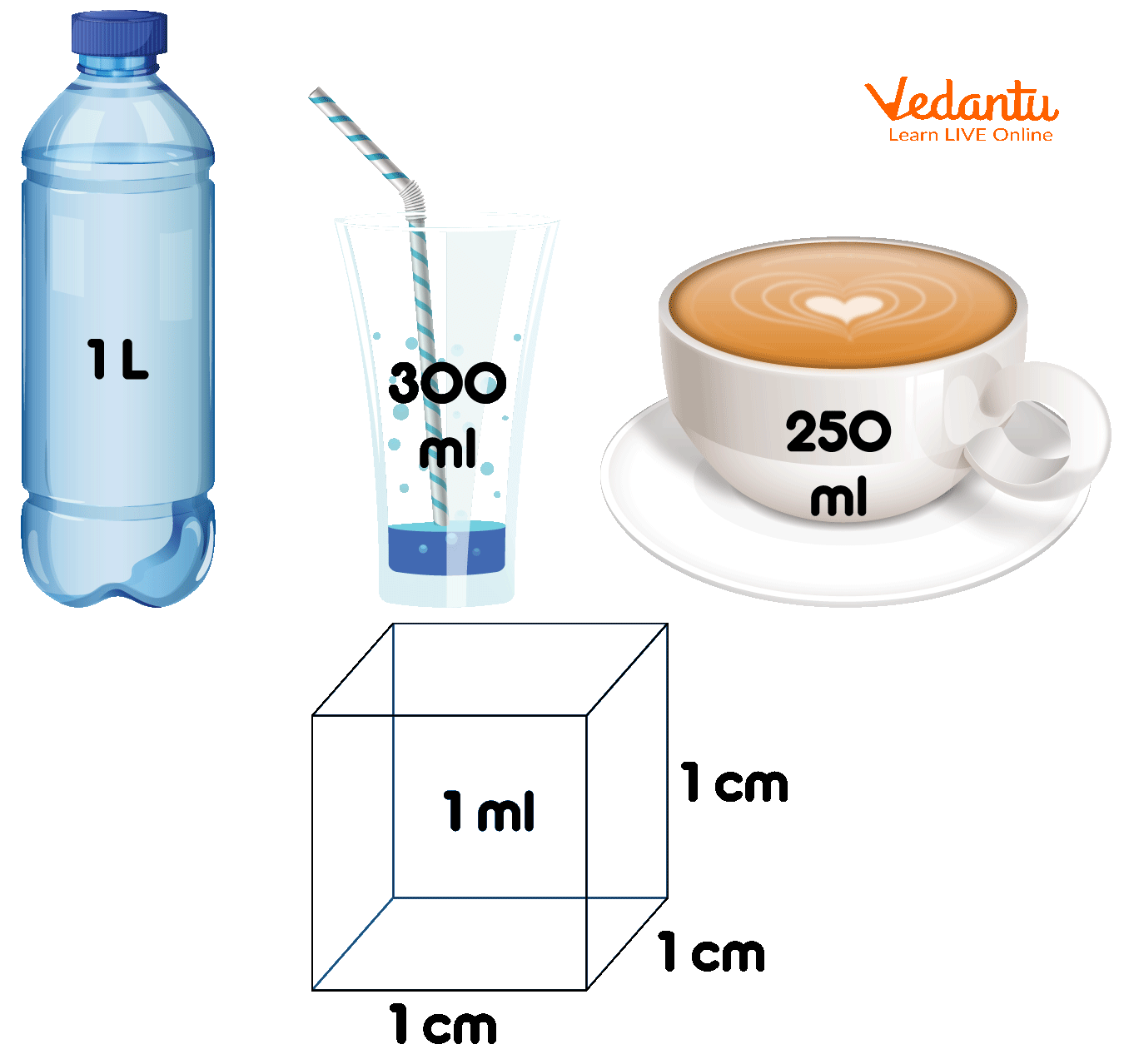
Different Measurements Tools of Litre
What is Milliliter?
A millilitre is a smaller unit than a litre.
It represents the volume or the capacity of a liquid.
It is used to measure a smaller quantity of liquid and is equal to a thousandth of a litre (1 litre = 1000 milliliters).
A millilitre is denoted by the ml or mL.

Millilitre Jar
Different Types of Tools Used to Measure Volume of a Liquid
In Maths and Science, the “tools” are used for measuring the volumes of liquids. These tools are made from glass, plastic, and also metal, and if we talk about professional language, these are called “glassware.” In the laboratory, we have seen a variety of glassware used for measuring volumes.
Beakers and Flasks
Beakers and flasks are used to make measurements of volumes, volume levels are printed on the side of the beaker.
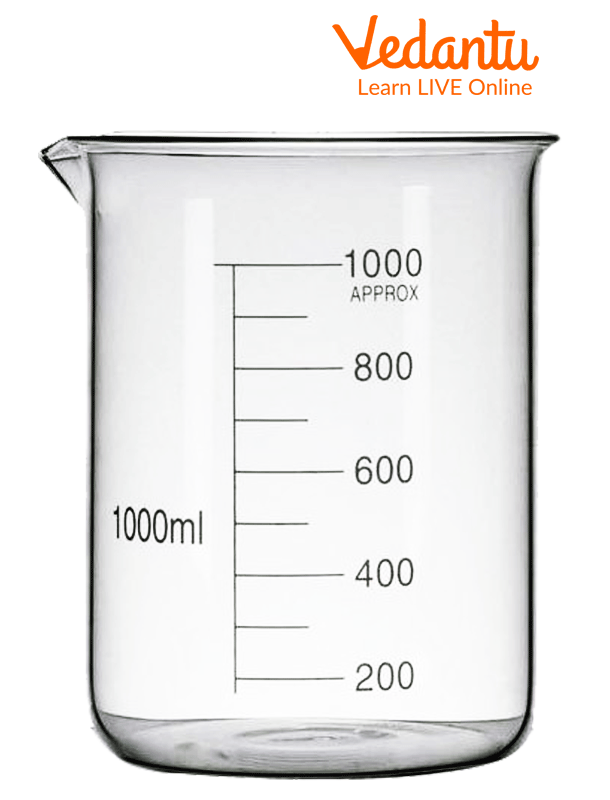
Beaker
Cylinders
Cylinders are transparent cylinders with divided markings.
These cylinders are better than beakers and flasks.
Cylinders are manufactured in sizes ranging from 5 mL to 2000 mL.
Compared to beakers and flasks, cylinders are available in either glass or plastic, and glass is easier to clean.
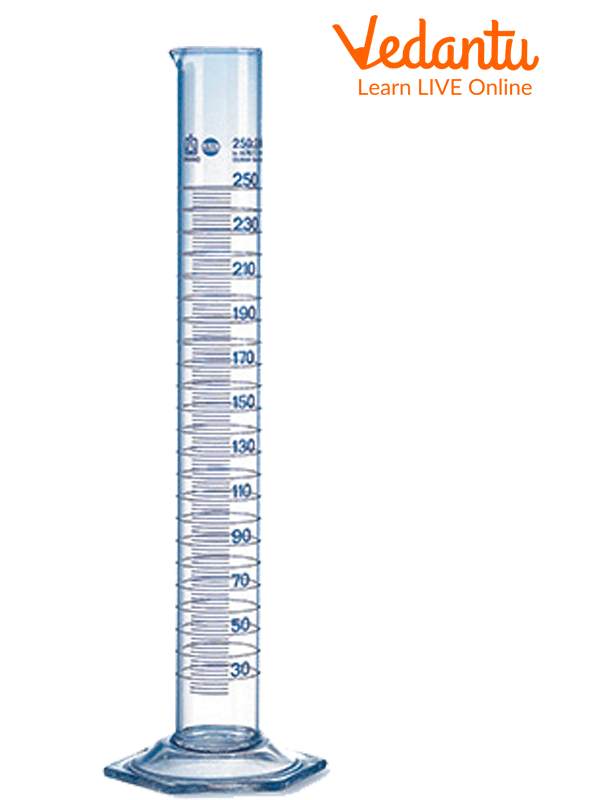
Cylinders
Burette
Burets are cylindrical pieces of glassware painted on the side.
Burets are available in sizes from 10 mL to 100 mL; 50 mL is the most common size.
It is also called a “stopcock” that allows the liquid to flow out through the bottom.
A large difference exists between a volume of 25 millilitres (shortly mL) and 25.00 mL.
The measuring device only needs to be able to measure an actual volume like 1 mL.
Measuring 25.00 mL requires a device capable of measuring within a few one-hundredths of a millilitre.
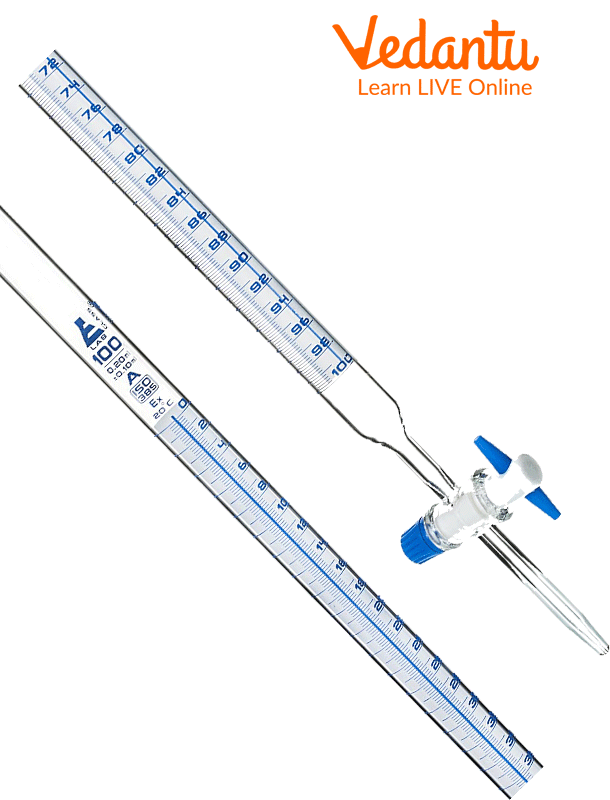
Burette
Pipette
A pipette is a long tube used to measure out small amounts of solution only.
It can hold volumes of up to 100 millilitres.
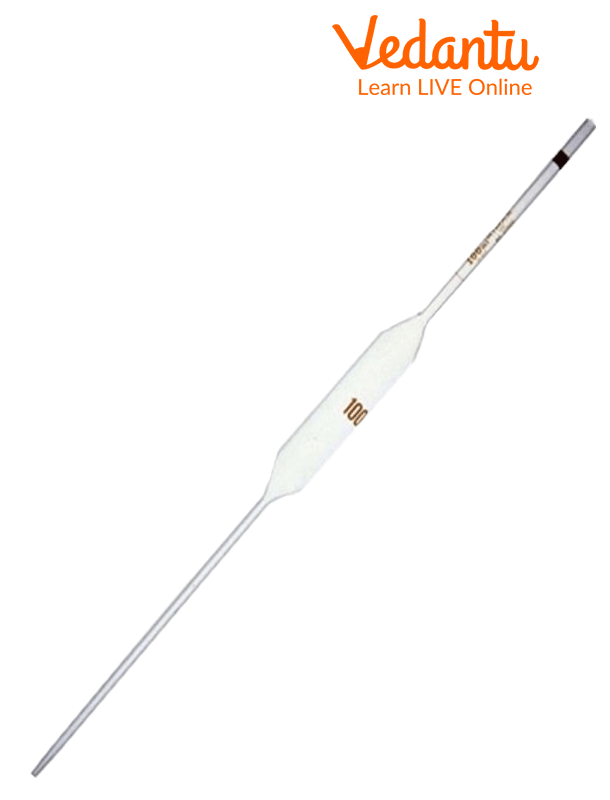
Pipette
How to Convert Liters into Milliliters?
Step 1: The first question that arises is that 1L is equal to how many ml. We all know that 1 litre is equal to 1000 ml. So, the conversion that is used to convert litres to millilitres is 1000.
Step 2: To convert litres to millilitres, we multiply the given quantity by 1000.
Suppose we convert 8 litres to millilitres. So, 8 × 1000 = 8000 ml. Therefore, 8 litres = 8000 millilitres.
Step 3: It should be noted that to convert millilitres to litres, we have to divide the given number by 1000.
Example: Convert 5000 millilitres to litres. So, 5000 ÷ 1000 = 5 liters. Therefore, 5000 millilitres = 5 litres.
Unit conversion is an important part of measurement in maths subjects. Units are converted using the correct conversion of the quantity.
For example, 1 litre is equal to 1000 millilitres, 0.264 gallons, 1.0566 quarts, and 2.1133 pints.
Solved Examples
Example 1. Convert 200 L to mL.
Ans:
We know that 1 L = 1000 mL
So,
200 L = 200 × 1,000 = 2,00,000 mL
Example 2. Reena bought 4L of tomato juice. So, how many mL of juice does Reena have now?
Ans:
We know that 1 L = 1000 mL
So,
4L = 4× 1000mL
= 4000mL
Reena has 4000 mL juice now.
Practice Questions
Q1. Convert the given quantity from litres to millilitres -
(a) 5L 400ml
Ans: 5400ml
(b) 7L 600ml
Ans: 7600ml
Q2. Convert the given quantity from millilitres to liter -
(a) 1900ml
Ans: 1.9L
(b) 2700ml
Ans: 2.7L
FAQs on Convert Millimeters to Liters Instantly: Simple Guide
1. How many millilitres are in one litre?
There are exactly 1000 millilitres (ml) in 1 litre (L). A millilitre is a unit of volume that is one-thousandth of a litre.
2. What is the easiest way to convert litres to millilitres?
To convert litres to millilitres, you simply multiply the number of litres by 1000. For example, to convert 2 litres to millilitres, you calculate 2 x 1000 = 2000 ml.
3. How do you convert millilitres back to litres?
To convert millilitres to litres, you divide the number of millilitres by 1000. For example, 500 ml is equal to 500 ÷ 1000 = 0.5 litres.
4. Why are there 1000 millilitres in a litre?
The prefix 'milli' in the metric system means one-thousandth (1/1000). So, a 'millilitre' literally means one-thousandth of a litre. This is why you need 1000 of them to make up one whole litre, similar to how 1000 grams make up a kilogram.
5. How many 250 ml or 500 ml portions make 1 litre?
Since 1 litre is 1000 ml, you can figure this out with simple division:
- It takes four 250 ml portions to make 1 litre (1000 ÷ 250 = 4).
- It takes two 500 ml portions to make 1 litre (1000 ÷ 500 = 2).
6. What are some common examples of items measured in millilitres and litres?
We use these units every day.
- Millilitres (ml) are used for smaller quantities like medicine doses, small juice boxes, perfume bottles, and ingredients in a recipe.
- Litres (L) are used for larger quantities like water bottles, milk cartons, petrol, and the capacity of a bucket.
7. If a bottle is labelled 1.5 litres, how many millilitres does it hold?
To find the amount in millilitres, you multiply the litres by 1000. So, 1.5 litres is equal to 1.5 x 1000 = 1500 millilitres.
8. Can you convert 1 litre directly into kilograms (kg)?
No, you cannot convert them directly because a litre measures volume (how much space something takes up) while a kilogram measures mass (how heavy it is). The conversion depends on the substance. For water, 1 litre is almost exactly 1 kg, but 1 litre of oil would be lighter and 1 litre of honey would be heavier.
9. What is the difference between the capacity and volume of a container?
Capacity is the total amount a container can hold (e.g., a 1-litre bottle has a capacity of 1000 ml). Volume is the amount of substance currently inside it (e.g., the bottle might only have a volume of 200 ml of water in it). Capacity is the maximum possible volume.

















